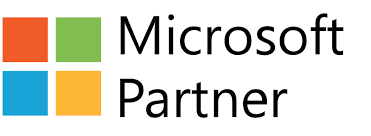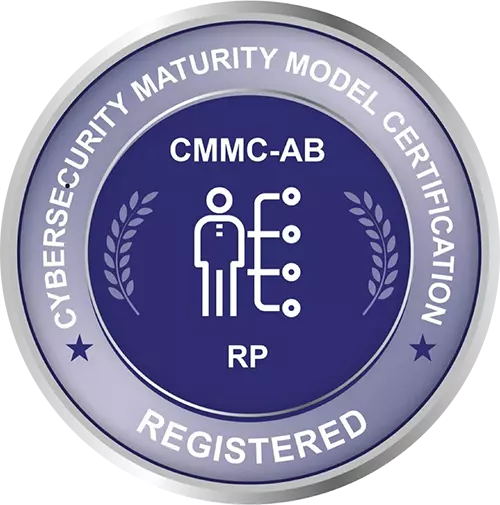
The Merit-based Incentive Payment System, otherwise known as MIPS, has come a long way from its 2017 beginnings. It’s since undergone a few changes to address provider concerns and patient health, and this year is certainly no exception. Whether you’re newly eligible for MIPS, or you’ve been participating in it for a while, it’s worth discussing some of the most recent changes and challenges to face the program, and what solutions are available to meet them. For those who need a refresher, we’ll start with a brief overview of what MIPS is, its requirements, and how to know if your practice or group should apply.
MIPS is a national incentive program that rewards Medicare Part B providers based on good performance in four categories. It integrates three previous Medicare programs, including the Physician Quality Reporting System (PQRS), the Value-Based Payment Modifier (VM) Program, and the Medicare Electronic Health Record (EHR) Incentive Program. While MIPS does incentivize providers based on their scores, the ultimate purpose behind the program is to encourage better health care, lowered costs, and improved data quality. Each provider’s score is based on a select group of measures and activities under each category, resulting in a negative, neutral, or positive adjustment to their future Medicare payments.
According to CMS, providers are obligated to participate in MIPS if they:
Eligible providers can participate under MIPS either as individuals, or within groups. Individual providers apply to MIPS with a National Provider Identifier (NPI), as well as an Associated Taxpayer Identification Number (TIN), while groups use multiple NPIs under a single TIN.
Note: Providers considering group status receive MIPS scores that reflect the entire group’s performance.
Eligibility is evaluated during a Performance Year, and involves two reporting segments: the first to confirm preliminary eligibility, and a second to compare results and make a final determination. Providers that do not participate in MIPS, but are found eligible for the program, could face a negative nine (9) percent penalty on reimbursements for the following year.
You can find more information about eligibility for individuals, groups, and virtual groups here.
The four categories of MIPS are Quality, Improvement Activities, Promoting Interoperability, and Cost (making up 30, 15, 25, and 30 percent of a total MIPS score, respectively).
Note: If you’re familiar with PQRS, MIPS utilizes the same performance measures for its Quality category. Need a refresher on the history of PQRS and its transition to MIPS?
Quality
This reporting reflects the quality of care delivered by your practice or group, based on measures developed by CMS.
Quality measures include Outcomes, High Priorities, and Processes. Outcomes involve the end results of patient care. High Priorities touch on factors like appropriate use, care coordination, efficiency, patient experience, and patient safety. Processes demonstrate the steps that your clinicians take to improve the health of their patients.
While you have options on which measures you choose to submit, there are some basic requirements. CMS typically wants to see one Outcome measure if available, but that can be substituted with a High Priority mentioned above. Click here to learn more about each type of measure and how many of them are needed in your reporting.
Improvement Activities
These are used to evaluate how your practice or group improves its access to care, care processes, and patient engagement. Similar to quality measures, you can choose which activities you report as long as they fit the following combinations:
More information about what constitutes high- or medium-weighted activities can be found here.
Promoting Interoperability (PI)
PI is about objectives and measures that evaluate patient engagement, as well as the certified electronic health record technology (CEHRT) by which your patient data is shared. For this category, providers are required to submit an electronic health record (EHR) that complies with:
Providers must also include data for measures within a continuous 90-day period. Read more about specific objectives and measures here.
Cost
This is arguably the most straightforward of the four categories if only for the fact that CMS already has access to it. They use their own cost measures to evaluate Medicare claims that you’ve submitted, and determine how they affect your MIPS scoring.
According to CMS, these measures assess:
You can read more about cost measures — including procedural, acute inpatient, and chronic condition — on the CMS website.
Would you like assistance selecting the measures and activities to report under these performance categories? Ask HCRS for help, or check out CMS’s online tool.
No More Exceptional Performance Bonuses
The current performance period for MIPS has already experienced a few changes, including one that may be particularly influential: establishing this year as the final one that providers can receive bonuses for exceptional performance when their MIPS final scores are higher than 89 points. While this may be disappointing for some (the majority of positive MIPS payment adjustments have come from exceptional performance), it appears that CMS is hoping its new addition of MIPS Value Pathways will continue to boost quality measures moving forward. (Providers and groups should also note that they must receive a MIPS score of 75 points in order to avoid an adjustment penalty.)
MIPS Value Pathways
2023’s Performance Year will see the start of MIPS Value Pathways (MVPs). According to the American College of Surgeons, these represent a new framework to “[connect] activities and measures across the four MIPS categories that are relevant to a specific specialty, condition, or population.” Originally developed in 2020, MVPs were ultimately postponed due to the COVID-19 pandemic.
CMS notes how MVPs will include a foundation of “Promoting Interoperability measures and a set of administrative claims-based quality measures that focus on population health.” You can find more information about MVPs and their guiding principles here.
While MIPS has served as a consolidation of past CMS programs, there’s still room for improvement. The following are some of challenges that providers have voiced post-implementation, as detailed by RevCycleIntelligence:
Purpose. Not all providers see MIPS as a means of improving patient care. Some question whether it “simply incentivizes providers to focus on reporting.”
Return on Investment. Others say the positive payment adjustments for “good scores” aren’t enough to offset the costs they’ve incurred for the training and technology that was needed to meet these performance standards.
Delayed Feedback. Of 11 provider groups that were interviewed about MIPS, 10 of them said that “performance feedback from CMS was not timely or meaningful” — specifically, that the feedback either didn’t align with a practice’s specialty, or that feedback from the previous Performance Year didn’t come soon enough to implement during the current one.
CMS has been working to address these concerns. The CMS 2022 proposed rule intends to raise its performance threshold so that higher adjustments will be available to providers that qualify, while talks are planned for MIPS Value Pathways to include performance measures that take specialists into account.
While these changes and challenges are being addressed, there are still ways that your practice or group can improve its performance scores and qualify for higher reimbursements. We recommend keeping the following tips in mind.
Qualify for Special Status or Exemptions
Your practice or group may be eligible for a special status designation if it falls under PY2022’s special status qualifications. This means that your original Promoting Interoperability percentage would be reweighted from 25 to 0, with that percentage redistributed to one or more MIPS categories. Qualifying for special status is automatic and does not require an application. You can learn more about eligibility here.
You may also be able to apply for two exceptions to reduce your reporting requirements: the Promoting Interoperability Performance Category Hardship Exception, and the Extreme and Uncontrollable Circumstances Exception. More information about both is available here.
Submit More Than the Minimum Number of Measures
One aspect to MIPS that hasn’t changed is that providers can choose which performance measures they’ll submit for each of the four categories. It’s worth noting that your Quality and Promoting Interoperability scores can be improved if you choose to submit more than the minimum number of measures throughout the Performance Year. You can submit as many as you want for Quality, and only the highest six are counted. You can submit as many as nine for PI, and only the highest four or five will be counted, based on your CEHRT edition.
Review Cost Performance Measures
Because CMS collects performance data for your Cost category directly from Medicare claims, you don’t need to resubmit this data. That said, you do have the ability to review Cost performance measures to glean useful information on how to address affordable care.
Improve Your Data Management
Meeting the minimum requirements for data completeness and submission deadlines under MIPS is largely determined by how well you can collect, organize, and interpret the data you need for each category. If you feel that your own internal systems are not sufficient for obtaining positive payment adjustments, there are third-party options available to improve these services before the next Performance Year (more on those below).
Note: A Performance Year is the same as a calendar year. MIPS performance data is due by March 31st for the previous calendar year.
Are you either looking for ways to apply to MIPS, or to improve your claims data reporting and MIPS scoring? We have services that can help.
As a Health Information Management (HIM) agency, HCRS has partnered with organizations like yours to improve data accuracy, coding, and security — all while staying on top of the latest changes within the healthcare industry. We do this through a combination of the following services:
Data Abstraction and Auditing. Our abstractors help you make sense of your data to improve your patient care, while our routine audits identify errors in coding and reporting.
Clinical Documentation Improvement (CDI). Our specialists ensure the thoroughness and completeness of your medical records.
Mortality Reviews. Our network of medical professionals evaluate the circumstances of individual patient deaths to confirm causes and establish plans of action.
CMMC. We advise healthcare organizations on how to meet compliance with the Cybersecurity Maturity Model Certification, the best framework for digital data protection.
All of these have the combined effect of improved health outcomes, higher MIPS scores, and positive reimbursements.
Are you ready to see similar benefits? Contact us today to get started.







Who We Are
Services
Career Opportunities
Interested in applying for a job with us? HCRS offers competitive compensation and benefits and hires a wide range of professionals. Apply Here

8601 Robert Fulton Drive, Suite 130 | Columbia, Maryland 21046 | Office: (301) 497-1187 Fax: (866) 384-2303
Copyright © 2025 Healthcare Resolution Services, Inc. All rights reserved. | Privacy Policy
